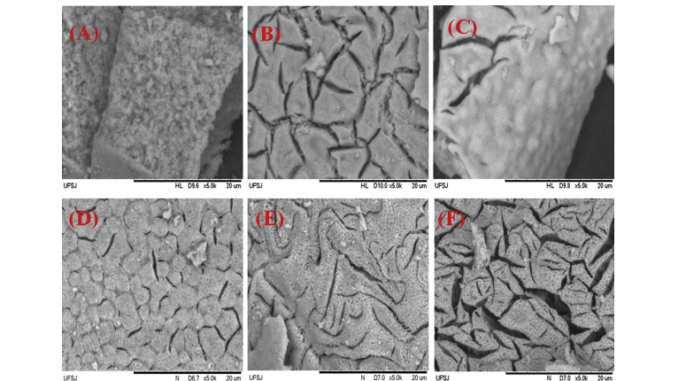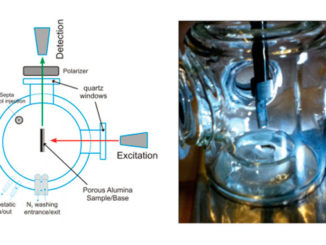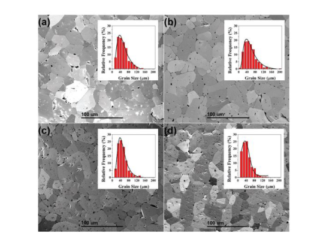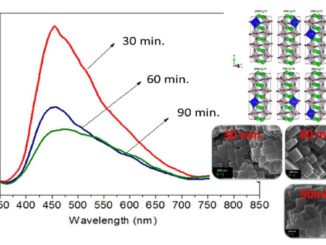
Structural, electronic and photoluminescence properties of Eu3+-doped CaYAlO4 obtained by using citric acid complexes as precursors
Abstract: The search for new materials that meet the current technological demands for photonic applications, make the Rare Earth ions embedded in inorganic oxides as excellent candidates for several technological devices. This work presents the synthesis of Eu3+-doped CaYAlO4 using citric acid as ligand to form a complex precursor. The methodology used has big draw due to its easy handling and low cost of the materials. The thermal analysis of viscous solutions was evaluated and the obtained compounds show the formation of a polycrystalline tetragonal phase. Rietveld refinement was used to understand the structural and the cell parameters of the crystalline phase as a function of temperature of heat treatment. Crystallite size and microstrain were determined and were shown to have a direct relationship with the temperature of the heat-treatment. The band-gap of the CaYAlO4 doped with 1 and 10 mol % of Eu3+ showed values close to 4.30 eV, resulting in their transparency in the visible region between 330 and 750 nm. Besides the intense photoluminescence from Eu3+, a study was conducted to evaluate the possible position of the Eu3+ in the CaYAlO4 as host lattice. Lifetime of the emission decay from Eu3+ excited state D-5(0) show that CaYAlO4 is a good host to rare earth ions, once it can avoid clustering of these ions in concentration as high as 10 mol%. The predictions of the sublevels of the F-7(1) crystal field level are discussed through the method of equivalent nearest neighbours (MENN). The intensity parameters (Omega(lambda), lambda = 2 and 4) are reproduced with physically reasonable values of average polarizabilities. The set of charge factors used in both calculations are in good agreement with the charge of the europium ion described by the Batista-Longo improved model (BLIM). The quantum efficiencies of the materials were calculated based on Judd-Ofelt theory. Based on the results obtained in this work, the materials have potential use in photonic devices such as lasers and solid state imaging devices in the red region of electromagnetic spectrum. (C) 2016 Elsevier B.V. All rights reserved.
Author(s): Perrella, RV; Nascimento, CS; Goes, MS; Pecoraro, E; Schiavon, MA; Paiva-Santos, CO; Lima, H; dos Santos, MAC; Ribeiro, SJL & Ferrari, JL.
OPTICAL MATERIALS
Volume: 57 Pages: 45-55 Published: JUL 2016
DOI: 10.1016/j.optmat.2016.04.012




